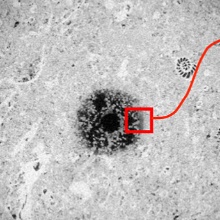New joint publication, published in "Environmental Science & Technology". The work has been developed within the SFB 1313 research projects B05 and Z02 (University of Stuttgart) in cooperation with the IMPRES group (University of Manchester, UK) of Vahid Niasar.
Authors
- Javad Shokri (University of Manchester, IMPRES group)
- Matthias Ruf (University of Stuttgart, SFB 1313 research project Z02)
- Dongwon Lee (University of Stuttgart, SFB 1313 research project B05)
- Saleh Mohammadrezaei (University of Manchester, IMPRES group)
- Holger Steeb (University of Stuttgart, SFB 1313 research projects B05, C05, and Z02)
- Vahid Niasar (University of Manchester, IMPRES group, SFB 1313 Mercator Fellow)
Abstract
Understanding geochemical dissolution in porous materials is crucial, especially in applications such as geological CO2 storage. Accurate estimation of reaction rates enhances predictive modeling in geochemical-flow simulations. Fractured porous media, with distinct transport time scales in fractures and the matrix, raise questions about fracture-matrix interface dissolution rates compared to bulk dissolution rate and the scale-dependency of reaction rate averaging. Our investigation delves into these factors, studying the impact of flow rate and mineralogy on interface dissolution patterns. By injecting carbonated water into carbonate rock samples containing a central channel (mimicking fracture hydrodynamics), our study utilized μCT X-ray imaging at 3.3 μm spatial resolution to estimate the reaction rate and capture the change in pore morphology. Results revealed dissolution rates significantly lower (up to 4 orders of magnitude) than batch experiments. Flow rate notably influenced fracture profiles, causing uneven enlargement at low rates and uniform widening at higher ones. Ankerite presence led to a dissolution-altered layer on the fracture surface, showing high permeability and porosity without greatly affecting the dissolution rate, unlike clay-rich carbonates. This research sheds light on controlling factors influencing dissolution in subsurface environments, critical for accurate modeling in diverse applications.

Matthias Ruf
Dr.-Ing.Post-Doctoral Researcher, Project Z02

Dongwon Lee
M. Sc.Doctoral Researcher, Research Project B05

Holger Steeb
Prof. Dr.-Ing.Spokesman, Principal Investigator, Research Projects B05, C05, and Z02, Central Project Z


